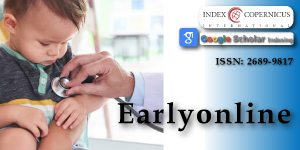Excipients and Vehicles in Galenic Practice: Considerations for Neonatology and Pediatrics: An Overview and Results of a Practical Experience
Main Article Content
Abstract
Excipients are fundamental components of galenic formulations, critically influencing the safety and efficacy of the final medicinal product. This is of paramount importance in neonatal and pediatric populations, where physiological immaturity results in significant differences in pharmacokinetics and pharmacodynamics compared to adults.
This work provides a comprehensive overview of excipients and vehicles used in galenic preparations for these vulnerable groups. It highlights specific excipients known to be dangerous, detailing their mechanisms of toxicity, and suggests safer alternatives. The discussion covers formulations for oral solutions, suspensions, and topical dermatological use, including ready-to-use vehicles. The role of the prescribing physician and the verifying pharmacist is emphasized, underscoring the necessity of checking for efficacy, safety, incompatibilities, and microbiological compatibility.
The results of a practical five-year local experience with an observational analysis are provided.
Furthermore, innovative technologies such as 3D printing for pediatric dosage forms are discussed. The conclusion asserts that a rigorous, risk-based assessment of excipients is essential in neonatal and pediatric galenic practice to ensure patient safety.
Article Details
Copyright (c) 2025 Luisetto M, et al.

This work is licensed under a Creative Commons Attribution 4.0 International License.
Bobillot M, Delannoy V, Trouillard A, Kinowski JM, Sanchez-Ballester NM, Soulairol I. Potentially harmful excipients: State of the art for oral liquid forms used in neonatology and pediatrics units. Pharmaceutics. 2024;16(1):119. Available from: https://doi.org/10.3390/pharmaceutics16010119
European Medicines Agency. Reflection paper: Formulations of choice for the paediatric population. EMA/CHMP/PEG/194810/2005. London: EMA; 2006. Available from: https://www.ema.europa.eu/en/documents/scientific-guideline/reflection-paper-formulations-choice-pa…
Rouaz K, Chiclana-Rodríguez B, Nardi-Ricart A, Suñé-Pou M, Mercadé-Frutos D, Suñé-Negre JM. Excipients in the paediatric population: A review. Pharmaceutics. 2021;13(3):387. Available from: https://doi.org/10.3390/pharmaceutics13030387
Belayneh A, Tadese E, Molla F. Safety and biopharmaceutical challenges of excipients in off-label pediatric formulations. Int J Gen Med. 2020;13:1051-1066. Available from: https://doi.org/10.2147/ijgm.s280330
Kovács A, Péter-Héderi D, Perei K, Budai-Szűcs M, Léber A, Gácsi A. Effects of formulation excipients on skin barrier function in creams used in pediatric care. Pharmaceutics. 2020;12(8):729. Available from: https://doi.org/10.3390/pharmaceutics12080729
Fernandes JD, Machado MCR, de Oliveira ZNP. Children and newborn skin care and prevention [Prevenção e cuidados com a pele da criança e do recém-nascido]. An Bras Dermatol. 2011;86(1):102-110. Available from: https://doi.org/10.1590/s0365-05962011000100014
Valeur KS, Holst H, Staunsholm L, Greisen G. Excipients in neonatal medicinal products: Never prescribed, commonly administered. Pharmaceut Med. 2018;32(4):251-258. Available from: https://doi.org/10.1007/s40290-018-0243-9
Lass J, Naelapää K, Shah U, Käär R, Varendi H, Turner MA, et al. Hospitalised neonates in Estonia commonly receive potentially harmful excipients. BMC Pediatr. 2012;12:136. Available from: https://doi.org/10.1186/1471-2431-12-136
Gershanik J, Boecler B, Ensley H, McCloskey S, George W. The gasping syndrome and benzyl alcohol poisoning. N Engl J Med. 1982;307(22):1384-1388. Available from: https://doi.org/10.1056/nejm198211253072206
Peleg O, Bar-Oz B, Arad I. Coma in a premature infant associated with the transdermal absorption of propylene glycol. Acta Paediatr. 1998;87(11):1195-1196. Available from: https://doi.org/10.1080/080352598750031211
Dupuis A. [Presentation on endocrine disruptors]. GERPAC Conference; 2022 Oct 6; Poitiers, France.
Salunke S, Brandys B, Giacoia G, Tuleu C. The STEP (Safety and Toxicity of Excipients for Paediatrics) database: part 1--a need assessment study. Int J Pharm. 2013;457(1):310-320. Available from: https://doi.org/10.1016/j.ijpharm.2013.09.013
Mansourian M, Dijkers E, Silva CCV, Polonini HC. Compatibility of commonly used active pharmaceutical ingredients in a ready-to-use oral suspending vehicle. Pharmaceutics. 2023;15(10):2388. Available from: https://doi.org/10.3390/pharmaceutics15102388
Casiraghi A, Centin G, Selmin F, Picozzi C, Minghetti P, Zanon D. Critical aspects in the preparation of extemporaneous flecainide acetate oral solution for paediatrics. Pharmaceutics. 2021;13(11):1963. Available from: https://doi.org/10.3390/pharmaceutics13111963
Spennacchio A, Lopedota A, La Forgia F, Fontana S, Franco M, Denora N. Physicochemical stability of the extemporaneous ibuprofen oral suspension in "Wagner" base. Int J Pharm Compd. 2023;27(1):72-77. Available from: https://pubmed.ncbi.nlm.nih.gov/36720064/
Sandler Topelius N, Shokraneh F, Bahman M, Lahtinen J, Hassinen N, Airaksinen S, et al. Automated non-sterile pharmacy compounding: A multi-site study in European hospital and community pharmacies with pediatric immediate release propranolol hydrochloride tablets. Pharmaceutics. 2024;16(5):678. Available from: https://doi.org/10.3390/pharmaceutics16050678
Bochner F, Hooper WD, Tyrer JH, Eadie MJ. Factors involved in an outbreak of phenytoin intoxication. J Neurol Sci. 1972;16(4):481-487. Available from: https://doi.org/10.1016/0022-510x(72)90053-6
Belayneh A, Tadese E, Molla F. Safety and biopharmaceutical challenges of excipients in off-label pediatric formulations. Int J Gen Med. 2020;13:1051–1066. Available from: https://doi.org/10.2147/ijgm.s280330

